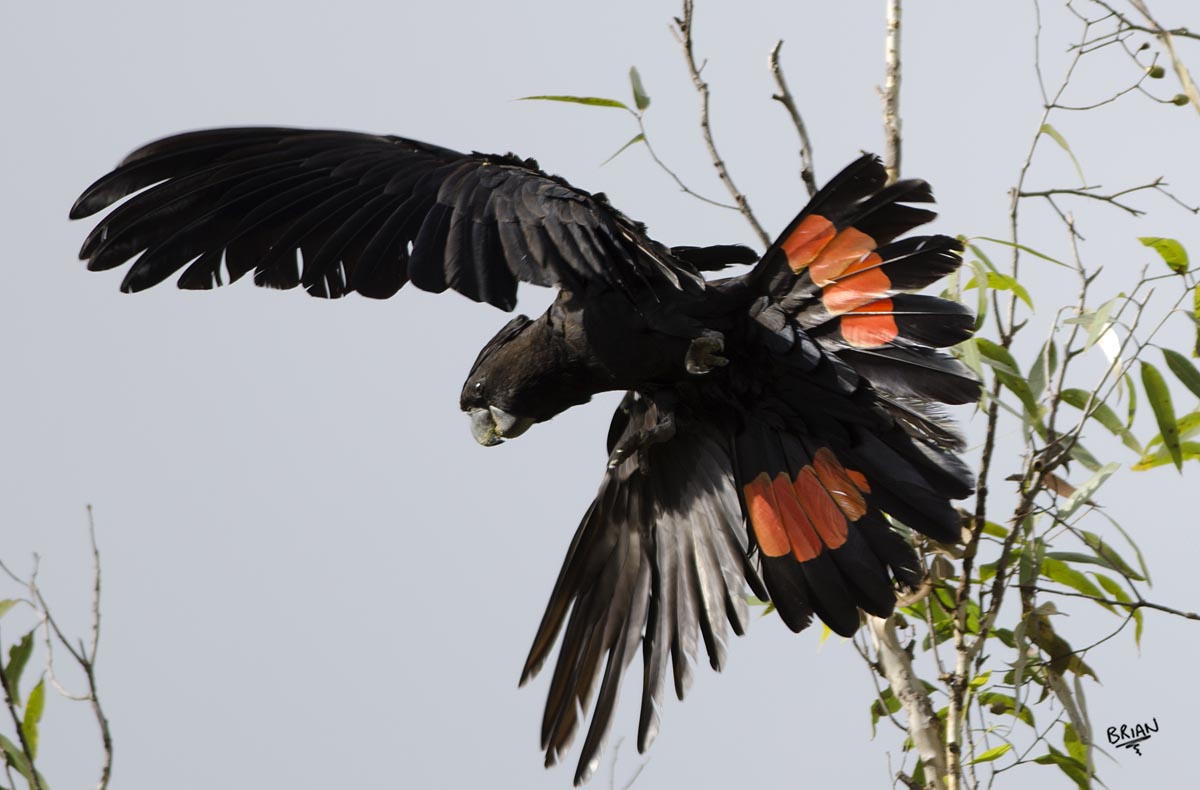

Their strong beak can open the toughest nuts. Its native diet is palm fruit, nuts from the kanari tree (Java almond), stringy eucalyptus tree bark, and tree seeds. In the wild, black palm cockatoos often feed in the early morning hours. If the bird does not receive sufficient mental stimulation, it can develop behavioral issues such as feather plucking or excessive screaming. Other common ailments that can affect these birds include kidney problems, bacterial infections, and psittacine beak and feather disease (PBFD), a viral condition.

Though it is a large bird, it is light for its size and prone to obesity in captivity. Among the parrots, it has one of the lowest reproduction rates. This bird’s long lifespan serves the breed well because it usually lays one egg every two years or so. The natural dust shed by this bird can coat the nearby surfaces and trigger allergies for those sensitive to dust or animal dander. These powder-down parrots enjoy baths and should regularly get the opportunity to get wet. If you cannot accommodate a cage this size or an aviary, it is best to consider one of the smaller cockatoo species. The cage should be at least 10 feet long, 6 feet wide, and 6 feet high. The black palm cockatoo requires a large enough cage to accommodate flight and play. This species is not the right choice if you maintain regular obligations outside of the home for long periods. This exclusivity is mostly due to their temperament and extensive care and training requirements.īlack palm cockatoos should not be left alone for more than eight hours a day.
Big black cockatoo professional#
Generally, they are seen most often in zoos, professional aviaries, and bird shows. Though there is some appeal to these birds in the exotic pet trade, they are not as common as other cockatoos. If you want to determine sex, genetic or surgical sexing is necessary. This bird is a monomorphic species, meaning there is no visual way to tell males from females. This species is not recommended for families with children. The size and shape of the beak, and the fact that the upper and lower mandibles don’t meet, makes it perfect for cracking open nuts. Within the parrot family, their beak is only eclipsed in size by the hyacinth macaw. The size of its beak makes it look intimidating. Their cheeks are as striking as its dark grayish-black beak, giving it a very distinct profile up close.
Big black cockatoo skin#
This otherwise single-colored bird has bright red patches of bare skin on their cheeks, which change colors when the bird gets excited. The same color appears on their very long crest, as well as their feet and legs. The black palm cockatoo is a very dark, smoky gray color that appears blacker on some birds than others. It makes very distinct, deafening calls, and you (and your neighbors) need to be able to tolerate loud noises to live with one. They are one of the best talking cockatoos.Ī black palm cockatoo is not a good option for bird owners who live in apartments or condominiums. This bird’s natural vocalizations have a human-like sound, including their signature “hello.” Their vocal ability is well suited for learning words. Other scientists believe it is the sign of a male marking its territory. Some scientists believe the females listen to the drumming, then decide if it’s a suitable nesting spot. This behavior puzzles many scientists who study birds. When the stick breaks, it becomes part of the new nest. This drumming can be heard for up to 100 yards. In their natural habitat, male birds will use a large stick to “ drum” against a hollow tree before choosing where to build a nest. This is one of the very few bird species that will use tools. You can teach this species to perform many simple tricks with time and positive reinforcement. It is a brilliant and social bird, so if you are persistent, you can get this bird to follow your commands. To tame this species, the bird requires a lot of attention and consistent training. The black palm cockatoo can be a good pet, but don’t expect it to be as affectionate as many other parrots. Though their population is declining due to habitat loss as well a s sport and trade hunting, they are not considered endangered or even vulnerable. It is common to find them in small groups of six or fewer birds. These birds generally inhabit the rainforest and woodlands and nest in hollow trees. Also, this species now lives in New Guinea and Indonesia. The black palm cockatoo is native to Australia, particularly the very tip of northern Queensland. LIFE EXPECTANCY: Between 40 and 60 years in the wild up to 80 to 90 years in captivity with proper car e Origin and History COMMON NAMES: Black palm cockatoo, palm cockatoo, goliath cockatoo, great black cockatoo, Van Oort’s palm cockatoo, black macawĪDULT SIZE: 22 and 24 inches, weighing between 2 and 3 pounds


 0 kommentar(er)
0 kommentar(er)
